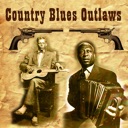Rural/Folk Blues
Delta Blues musician
Photograph by Eyd KazeryKey Attributes of Rural/Folk Blues
Select to filter timelineThemes
- Travel
- Political Issues/Activism
- War
- Love/Relationships
- Daily Life
- Oral Traditions
- Racism/Discrimination
- Segregation
- Slavery
Musical Features
- Instrumentals
- Accompaniment
- Improvisation
- Slide
- Call and Response
- Vocals
- Timbre
- Blues Form
- Phrasing
- Harmony
Instruments
- Harmonica
- Bass
- Guitar
- Other Percussion
- Strings
“[I]t’s what happened to your fore parents and other people. And that’s what makes the blues.”John Lee Hooker
Definition
Asked for a definition of the blues, most blues singers say that the blues is about real life, hard times and the troubles men and women have getting along. When your partner mistreats you badly then you get the blues, an “aching heart disease.” When your boss tells you your work is no good, you get the blues. Hearing the blues, you realize that you’re not the only one who’s been mistreated, and this helps you feel a little better.
Rural blues, sometimes known as folk blues because the music and lyrics were widely shared in oral tradition, was the earliest and most basic incarnation of this genre that has assumed many forms since its introduction. A direct path can be traced from the most ancient blues form up through rhythm & blues, rock & roll, soul, funk, disco, all the way to rap.
Distinctive to blues is its three-line verse or stanza form of blues in which the second line more or less repeats the first line, while the third line closes out the thought with a different line that rhymes with the first and second. However, the earliest rural blues from the 19th century sometimes had two-line verses, the second line either similar to or repeating the first and the second line different and finishing the thought with a rhyme. Most blues songs are accompanied with musical instruments.
Context and History
“I was just a boy and they put me to workin’ right alongside the men. . . Every man would be hollerin’. . . You might call them the blues but they were just made up things.”Muddy Waters
After the Civil War, Blacks remained tied to the land they had worked as enslaved people, but now as tenant farmers or sharecroppers where they were treated unfairly by landlords and employers. Jim Crow segregation laws took away their rights and freedom, and the violent activities of the Ku Klux Klan created a hostile environment. Sung in the colloquial (familiar, conversational) language of rural African Americans, blues songs served as a form of communication among a group of people that had few other entertainment options available to them.
African Americans invented and nurtured blues right from its beginnings in the Deep South as a recognizable musical genre in the 1890s. Sharing some elements with ragtime, it is believed to have originated in the cotton plantations, especially in the Mississippi Delta (although its lyrical and melodic roots undeniably lie in the songs brought over to the United States by enslaved Africans). The three-line rural blues form emerged out of African American work songs, field calls and protest songs, game songs and social songs, spirituals, and folk ballads.
Most of the early, rural/folk blues singer-guitarists did not specialize in blues only. They also performed Black folksongs, like “John Henry” and “Stagger Lee,” religious music, and also the popular songs of the day, depending on the audience and the occasion. They thought of themselves as “songsters,” or “musicianers,” rather than as blues singers. But beginning in 1920 the recording companies, suddenly competing with a new medium, radio, decided to open up a new, untapped market and record Black people singing blues—first the vaudeville blues, and a few years later, the rural blues. In the 1920s blues records were heavily advertised in the Black press, sold by mail order and in furniture stores (where they also sold the phonographs that played the records) in towns and cities, and became something of a fad. Audiences wanted blues, and musicians began to think of themselves as blues singers.
Rural blues were performed by both individuals accompanying themselves on guitar and by groups accompanying themselves mostly with portable instruments: acoustic guitar, harmonica, violin, banjo, and mandolin, and occasionally cornet. In the rural juke joints musicians also accompanied blues on piano, if there was one. An example of early acoustic guitar blues is “Levee Camp Blues” by the powerful Delta vocalist Son House, performed after his “rediscovery” in the 1960s. Blind Blake’s virtuoso playing is featured on “Diddie Wa Diddie” in a 1920s recording showing his “ragtime” piano-sounding guitar in which his right-hand fingers play melody notes, riffs and responses to his vocals. At the same time, his thumb either independently lays down a separate, syncopated bass line or it enhances the melodic line. Robert Johnson’s “Sweet Home Chicago” comes from the 1930s and incorporates a sparse texture in the accompaniment, a more modern rhythmic feel and a boogie-woogie bass line on guitar that later became a staple of urban, post-World War II Chicago blues and early rock ‘n’ roll. “Knox Country Stomp,” a contemporary performance by the Tennessee Chocolate Drops utilizes guitar, violin, mandolin, and bass in a rural string band. Sometimes homemade or ad hoc instruments were used, such as washboards, washtubs, jugs, scrappers, bones, kazoos, and diddley bow, a one-stringed guitar. Examples of these can be heard by Sonny Terry’s Washboard Band and “Whitewash Station” by the Memphis Jug Band. In the 1940s, rural blues became more cosmopolitan as many Blacks migrated from the plantations to work for wages in cities like Chicago and Detroit. The instruments became electrified, producing an amplified, urban blues sound. The rhythms became more pronounced and therefore more danceable, resulting in the hybrid genre rhythm & blues, which remains one of the most commercially popular today (although contemporary R&B bears little resemblance to the first recordings to wear that label). Rural blues influenced many other related genres during the early and mid-20th century, including boogie-woogie, vaudeville blues, urban blues and, always, the various strains of jazz.
Musical Features/Performance Style
The harmonic structure of most blues songs, whether rural blues, urban blues, boogie-woogie, or jazz, is based on a 12-bar form that centers on three chords: tonic, subdominant, and dominant seventh in a predictable sequence.
Vaudeville/classic blues songs, like the well-known “St. Louis Blues,” were a little different: they usually had blues sections with this structure, but they also had sections resembling the songs from musical theatre, with introductions, choruses and refrains. Blues adheres to a handful of established rhythmic and melodic patterns, but within those patterns it allows for a great deal of melodic and rhythmic improvisation within each song. The melody might be elaborated and varied in different ways in each verse. It can incorporate moans, cries, hollers, etc., and changing vocal timbres, from rich and smooth to raw and harsh. Instrumental responses, breaks and solos take a somewhat different route each time a song is performed. The voice interacts directly with the instruments. Musicians might use a call-and-response or question-and-answer technique where the lead instrument echoes the melody being sung or plays a “riff” or repeated melodic figure related to it. Sometimes the instruments play in tandem with the vocal line, at times slightly deviating from the melody line rather than playing in unison or harmony. Guitarists, in particular, also sometimes alter the sound by bending the strings or sliding a bottle neck or metal bar atop one string or several, up and down, following the sliding contours of the voice and emphasizing the blue notes (the flatted third and seventh degrees of the scale).
Lyrics
“High Sheriff Blues”
When your trial’s in Belzoni, ain’t no use to screamin’ and cryin’
When your trial’s in Belzoni, ain’t no use to screamin’ and cryin’
Mr. Ware will take you to the Belzoni jailhouse now.
Let me tell you folks how he treated me
Let me tell you folks how he treated me
Lord he put me in a cellar it was dark as it could be.
The words to rural blues served as commentaries on the ups and downs of daily life. Themes included relationships, hardship, traveling, imprisonment, current events and protest. Most of them protested mistreatment by lovers. A small but significant number, such as Charley Patton’s “High Sheriff Blues” protested racial discrimination, in this case making reference to the legal system that unfairly targeted African Americans. The songs were often handed down orally and underwent subtle changes from region to region. The earliest rural blues singers shared a repertoire of verses that they could recall and insert into a song once they got going. When they accompanied dancers, the songs went on for five, ten, or fifteen minutes and so a good singer was one who had a lot of verses stored up in memory. In this way they made up the songs during performance by singing the verse that related to the title of the song, and following it with other verses, some more closely related to the title and theme than others. As blues recordings began to influence the song-making process, from the 1920s onward, the younger singers began to memorize a set of verses and sing them back the same way every time.
Bibliography
- Barlow, Bill. Looking Up at Down: The Emergence of Blues Culture. Temple University Press. 1989.
- Evans, David. Big Road Blues. Da Capo Press. 1987.
- Ratcliffe, Philip. Mississippi John Hurt: His Life, His Times, His Blues. University Press of Mississippi. 2011.
- Sackheim, Eric. The Blues Line: A Collection of Blues Lyrics. Ecco Press. 1993.
- Titon, Jeff Todd. Early Downhome Blues. University of North Carolina Press. 1995.











